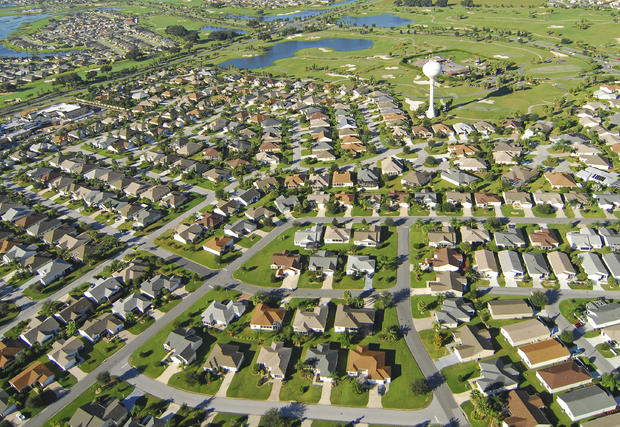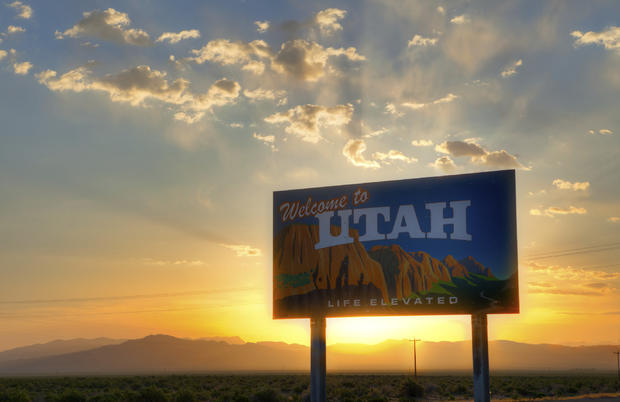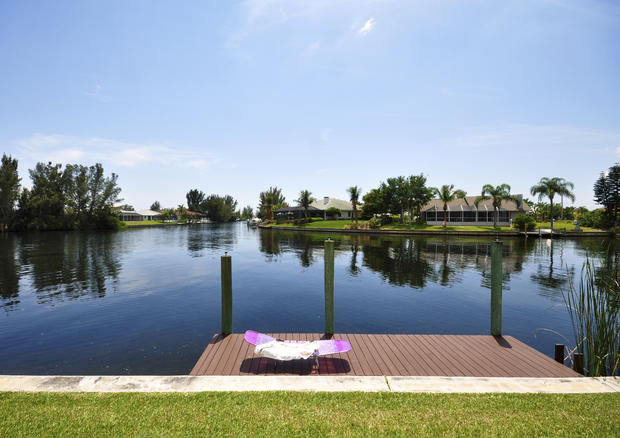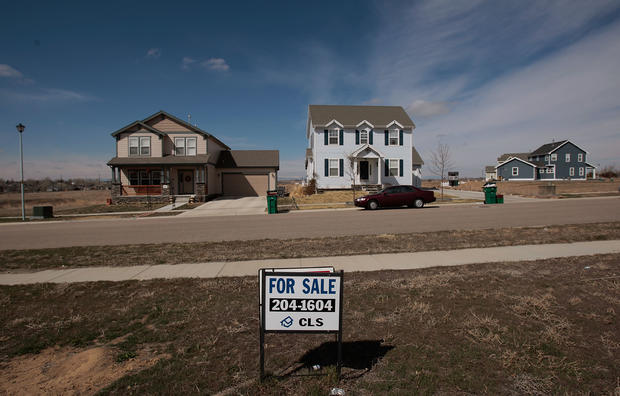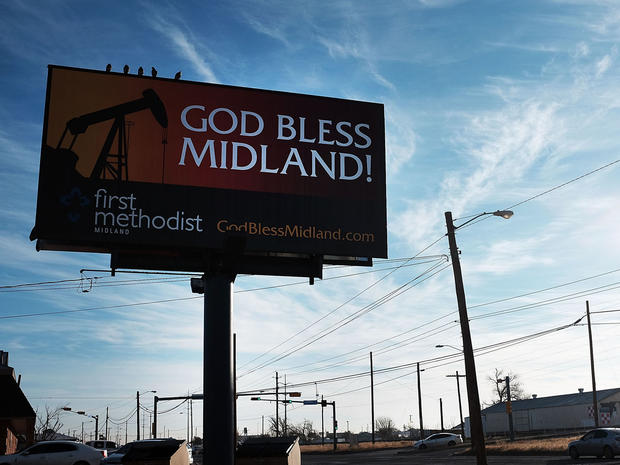The 9 fastest-growing metro areas in the U.S.
Three months after the release of data showing Florida displacing New York as the nation's third most populous state, new numbers are out showing that the Sunshine State is still home to the fastest-growing metro area in the U.S. The "Villages" ranks at the top of the list for a second year running.
Seven of the country's top 50 numerically gaining metro areas are in Florida, accounting for more than three-quarters of Florida's population gain between 2013 and 2014, while six Florida metro areas were among the 20 fastest-growing in the nation during the period, according to numbers published Thursday by the U.S. Census Bureau.
"Florida's ascension, revealed when the 2014 state population estimates were released last December, was a significant demographic milestone for our country," Census Bureau Director John Thompson said in a statement, noting "growth in areas such as central and southern Florida" for the trend.
There was sufficient migration to Florida, from other states as well as from abroad, to overcome the fact that in roughly half of the state's counties more people died than were born from 2013 to 2014, the bureau noted.
The Carolinas are home to four of the nation's 20 fastest-growing metro areas.
U.S. metro areas overall were home to about 272.7 million people in 2014, an increase of roughly 2.4 million from 2013. And of the nation's 381 metro areas, 298 gained population last year. New York remains the most populous U.S. metro area, with the region home to about 20.1 million people last year.
Click ahead to see the metro areas that made the Census Bureau's "fastest-growing" list.
1. The Villages, Florida, up 5.4 percent
The Villages is a metro area to the west of Orlando that bills itself as "Florida's Friendliest Retirement Hometown!" The Villages, which also touts itself as "the only place in the world where you can play golf free for the rest of your life," is home to about 114,000 people and more than 30 nine-hole golf courses. Not surprisingly, nearly 45 percent of its population is older than 65, and just over 28 percent are between 45 and 64 years old. Men outnumber women, with about 52 percent male and 48 percent female, an unusual scenario when compared to the country at large. The single-site residential real estate development spans over 26,000 acres in three adjoining counties in central Florida, with more than 15,000 people employed at its businesses, according to its website.
2. Myrtle Beach-Conway-North Myrtle Beach, S.C.-N.C., up 3.2 percent
Myrtle Beach, the onetime military town, is now a resort city at the heart of the Grand Strand, a 60-mile stretch of natural beauty on South Carolina's northeastern coast. It's a well-known destination for vacationers. The Myrtle Beach metro area stretches into two counties in South Carolina and one county in North Carolina.
3. Austin-Round Rock, Texas, up 3.0 percent
The five-county metro area in central Texas is commonly referred to as Greater Austin, and unlike the top two fastest-growing metro areas, its largest age group is made up of children and teenagers, with more than 28 percent of residents under the age of 20. The second largest age group is middle aged, with nearly 23 percent of residents between 45 and 64 years old. A high percentage of its residents are upper middle class, with nearly 28 percent of its households having an annual income between $75,000 and $150,000.
4. Odessa, Texas, up 2.9 percent
Founded in the late 1800s as a water stop and cattle-shipping point on the Texas and Pacific Railway, the metro area's population started to increase dramatically due to increased demand for oil during World War II. Like Austin-Round Rock, it too has a high percentage, just over 32 percent, of people under the age of 20. About 25 percent of Odessa metro's population is lower middle class, with annual household incomes of between $25,000 and $50,000.
5. St. George, Utah, up 2.9 percent
St. George is one of Utah's most popular travel destinations. Located in the southwestern part of the state, St. George was founded as a cotton mission in 1861 by the Church of Jesus Christ of Latter-day Saints. About 33 percent of its residents are under 20, and about 29 percent are lower middle class. Nearly 40 percent of residents 25 and older have an associate degree, a lower percentage than the rest of the state and the country.
6. Cape Coral-Fort Myers, Florida, up 2.7 percent
Known as "The Cape" by locals, the waterfront community is big on boating and says on its website that it has more canals than any other city. About 27 percent of its residents are middle aged, or between 45 and 64, a similar percentage to the state average, as well as the country. The second largest age group includes retirees, with nearly 24 percent of residents 65 or older. A high percentage, or almost 29 percent, of its residents are lower middle class.
7. Bend-Redmond, Oregon, up 2.7 percent
The picturesque metro area in the center of the state has grown from a lumber settlement to an urban center, known for its access to prime places for outdoor sports, including fishing, hiking and white-water rafting. Almost 29 percent of its residents are between the ages of 45 and 64; nearly 27 percent of its population is lower middle class, a makeup typical for Oregon but high for the U.S. More than 39 percent of those 25 and older have an associate degree, a higher percentage than the rest of the country.
8. Greeley, Colorado, up 2.6 percent
About 31 percent of this northern Colorado town's residents are under 20, a high percentage for Colorado and the country. It also has a high percentage of households with an annual income between $75,000 and $150,000, a typical percentage for the state but on the high side for the United States.
9. Midland, Texas, up 2.6 percent
Home to former President George W. Bush, Midland's economy at times has centered on oil production. More than 30 percent of its residents are children or teenagers, in line with averages in the state but high for the nation. About 26 percent of its population is upper middle class, and Midland metro has a lower percentage of people with a bachelor's degree than Texas and the United States.
Honorable mentions
Rounding out the Census Bureau's list of 20 fastest growing metro areas are the following:
10. Naples-Immokalee-Marco Island, Florida, up 2.5 percent
11. Houston-The Woodlands-Sugar Land, Texas, up 2.5 percent
12. Fort Collins, Colorado, up 2.4 percent
13. Hilton Head Island-Bluffton-Beaufort, South Carolina, up 2.4 percent
14. Daphne-Fairhope-Foley, Alabama, up 2.4 percent
15. Raleigh, North Carolina, up 2.3 percent
16. Orlando-Kissimmee-Sanford, Florida, up 2.2 percent
17. Charleston-North Charleston, South Carolina, up 2.2 percent
18. North Port-Sarasota-Bradenton, Florida, up 2.2 percent
19. Panama City, Florida, up 2.2 percent
20. Boise City, Idaho, up 2.1 percent

